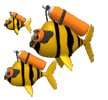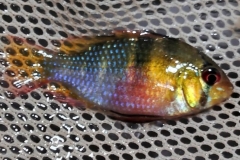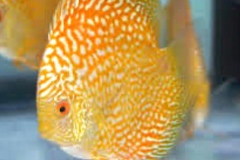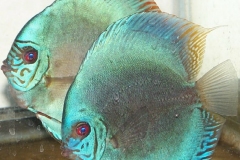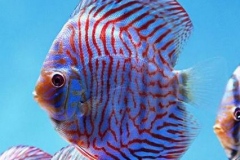Discus fish growth rates are influenced by many different factors. The main factor is keeping them healthy in a very clean aquarium. If any of your fish get sick at all the growth will stop until they get healthy again. Growth will also slow down or stop if they are stressed out from an aquarium with non-optimal water conditions. Choosing a high protein diet that the fish will happily eat is important. The higher the protein content, the faster the growth. The size of the aquarium is very important. I would recommend a minimum size of 55 gallons. Discus kept in an undersized or overcrowded tank will slow significantly in growth rates and will never get to the normal mature size. We have found that creating some current in the tank will also slightly increase the growth rate. In an ideal setting, discus fish can be expected to grow about 4 inches in a year. At fish farms with outside large ponds, they can grow to 5-6 inches in one year.
Please see all of the Discus fish for Sale at www.SOMETHINGSPHISHY.com
